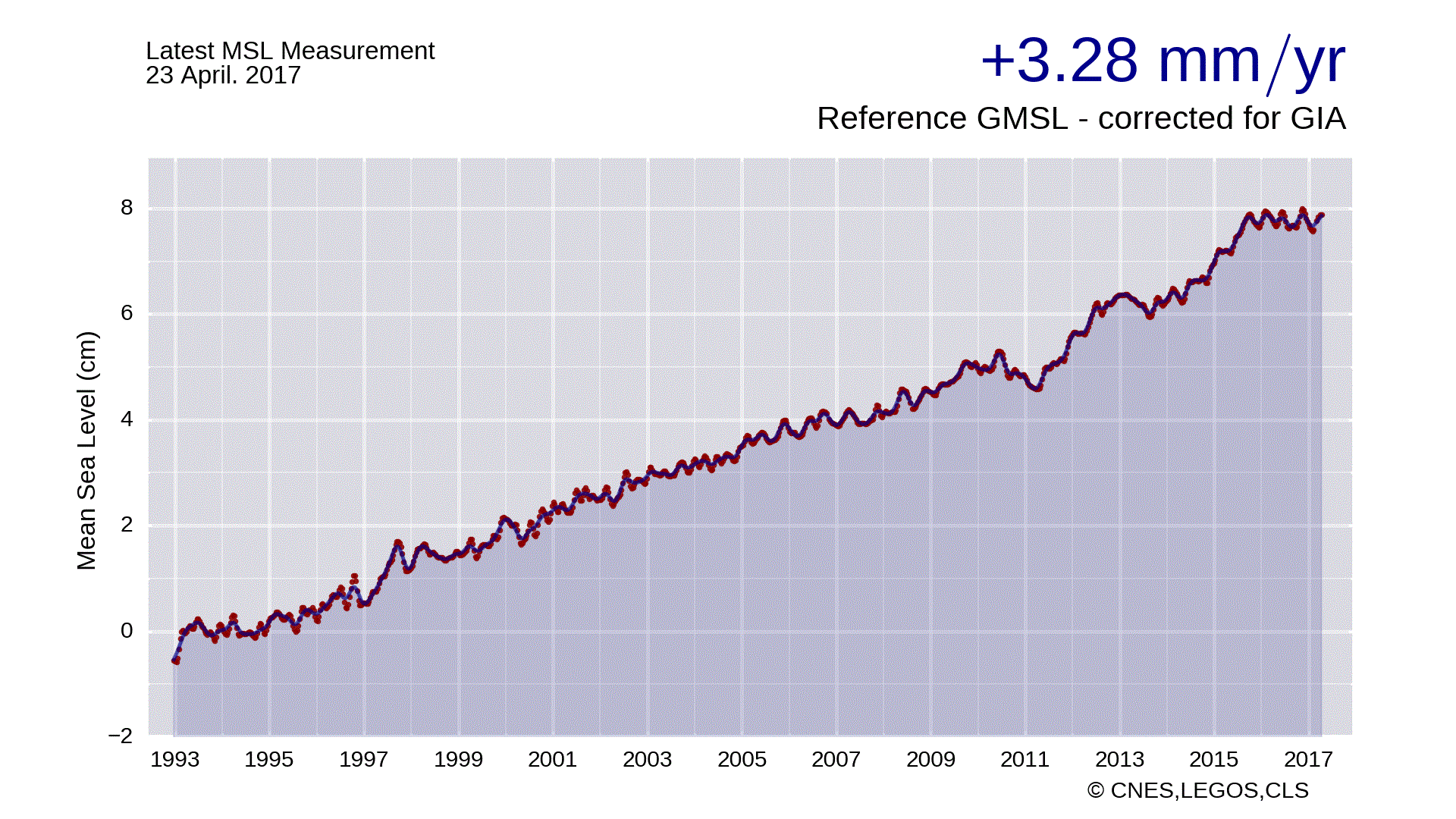Abstract's details
Assessment of the AVISO Mean Seal Level (MSL) indicator with an integrative approach
Event: 2017 Ocean Surface Topography Science Team Meeting
Session: Science I: Climate data records for understanding the causes of global and regional sea level variability and change
Presentation type: Poster
The global mean level of the oceans is one of the most important indicators of climate change. It incorporates the reactions from several different components of the climate system. Precise monitoring of changes in the mean level of the oceans, particularly through the use of altimetry satellites, is vitally important, for understanding not just the climate but also the socioeconomic consequences of any rise in sea level.
With the satellite altimetry missions, the AVISO Mean Sea Level (MSL) indicator has been calculated on a continual basis since January 1993: https://www.aviso.altimetry.fr/msl. 'Verification' phases, during which the satellites follow each other in close succession (TOPEX/Poseidon--Jason-1, then Jason-1--Jason-2 and Jason-2-Jason-3), help link up these different missions by precisely determining any bias between them. Other missions (SARAL/Altika, Envisat, ERS-1 and ERS-2, Cryosat-2, Sentinel-3a) are also used, after being adjusted on these reference missions, in order to compute Mean Sea Level at high latitudes (higher than 66°N and S), and also to improve spatial resolution by combining all these missions together. In addition, permanent monitoring of quality during the missions (Calval) and studies of the necessary corrections of altimetry data regularly add to our understanding and knowledge. Recently, the AVISO MSL indicator has been reprocessed in order to take into account new altimeter standards (e.g new ocean tide, new orbit solutions, etc …) and also to integrate the new Jason-3 altimeter mission launched in February 2016.
The objective of this study is to assess the evolution of the MSL indicator focusing on the impact of the new altimeter standards over all the period and on the impact of linking the MSL indicator with Jason-3 in April 2016. With an integrated approach, we will also compare the MSL indicator with in-situ measurements as tide gauges and temperature salinity profiles, estimating the uncertainties of such approaches. We will pay a particular attention to provide these analyses within confidence intervals explicitly defined.

With the satellite altimetry missions, the AVISO Mean Sea Level (MSL) indicator has been calculated on a continual basis since January 1993: https://www.aviso.altimetry.fr/msl. 'Verification' phases, during which the satellites follow each other in close succession (TOPEX/Poseidon--Jason-1, then Jason-1--Jason-2 and Jason-2-Jason-3), help link up these different missions by precisely determining any bias between them. Other missions (SARAL/Altika, Envisat, ERS-1 and ERS-2, Cryosat-2, Sentinel-3a) are also used, after being adjusted on these reference missions, in order to compute Mean Sea Level at high latitudes (higher than 66°N and S), and also to improve spatial resolution by combining all these missions together. In addition, permanent monitoring of quality during the missions (Calval) and studies of the necessary corrections of altimetry data regularly add to our understanding and knowledge. Recently, the AVISO MSL indicator has been reprocessed in order to take into account new altimeter standards (e.g new ocean tide, new orbit solutions, etc …) and also to integrate the new Jason-3 altimeter mission launched in February 2016.
The objective of this study is to assess the evolution of the MSL indicator focusing on the impact of the new altimeter standards over all the period and on the impact of linking the MSL indicator with Jason-3 in April 2016. With an integrated approach, we will also compare the MSL indicator with in-situ measurements as tide gauges and temperature salinity profiles, estimating the uncertainties of such approaches. We will pay a particular attention to provide these analyses within confidence intervals explicitly defined.

Contribution: Poster_OSTST17_GMSLComparisonWithSitu.pdf (pdf, 1822 ko)
Back to the list of abstract